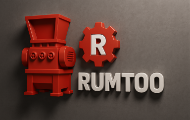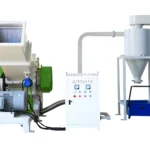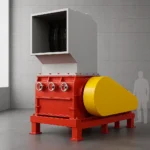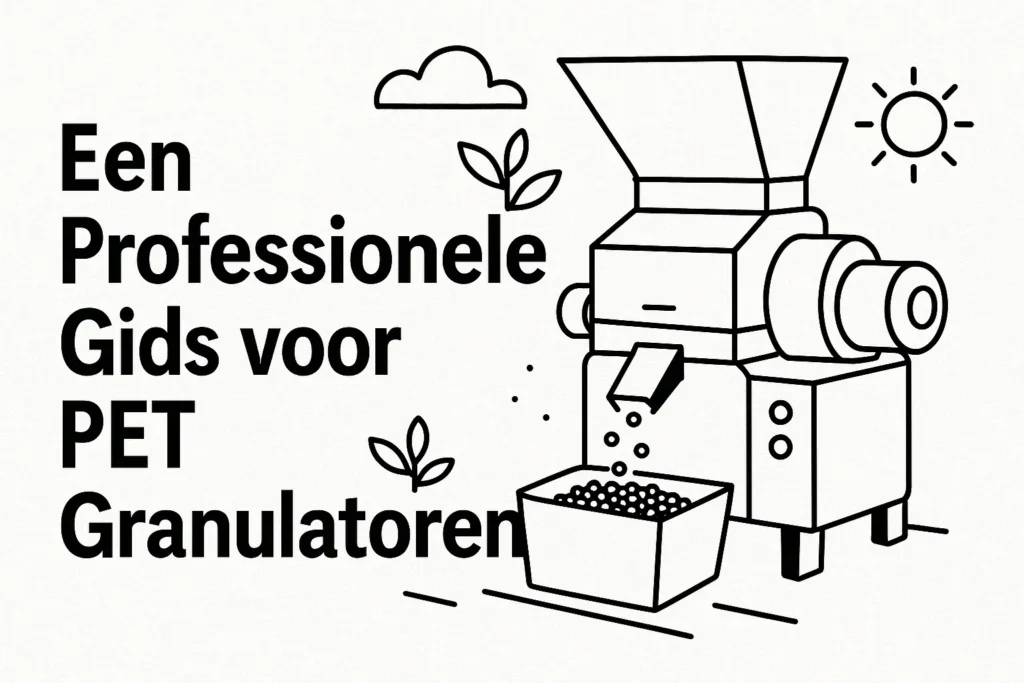Hello and welcome! If you're involved in the recycling industry, production, or looking for sustainable investment opportunities, you're likely already familiar with the enormous challenge and valuable opportunities that plastic waste—especially PET bottles—present. Today, we focus on an essential piece of equipment that is central to turning this challenge into value: the PET Bottle Granulator.
Consider this machine as the silent power that transforms used plastic bottles into valuable raw materials. It's not just about reducing plastic; it's about efficiency, quality, and ultimately profitability. So, pour yourself a cup of coffee and let's gain a deeper insight into why PET Bottle Granulators are so crucial and how the right choice can make a huge difference.
What Is a PET Bottle Granulator?
In simple terms, a PET bottle granulator is a powerful machine design specifically developed to chop or cut whole PET bottles (Polyethylene Terephthalate) into small, uniform pieces—also known as “flakes” or “granules.”.
Imagine a mountain of used bottles—water bottles, soft drink bottles, and food containers—that first need to be reduced in size before they can be washed, purified, and converted into recycled PET (rPET) pellets. The granulator is one of the first critical steps in this process, where large, cumbersome bottles are converted into manageable formats.
Why Is Granulation So Important?
Granulation is crucial for several reasons, and its impact is felt throughout the entire recycling process:
- Easier Handling and Transportation: Small flakes are more compact, easier to store, handle, and transport than large or compressed bottles.
- Better Washing and Sorting Capabilities: Smaller flakes make it easier to remove contaminants such as labels, glue, and residual liquids during subsequent washing cycles.
- Preparation for Further Processing: Consistent flake size is essential for efficient melting and extrusion of rPET pellets or fibers. Uniformity aids in smooth processing and higher quality of the final product.
- Increase Surface Area: Granulation increases the surface area of the plastic, which later in the recycling process helps with drying and better processing.
However, if the granulation process is not carried out properly, this can lead to inefficiencies, higher costs, and lower quality material, which affects the entire recycling chain.
How Does a PET Bottle Granulator Work?
Although there are different designs, the basic principle is often consistent across machines:
- Feeding: Loose or compacted PET bottles are loaded into the cutting chamber of the granulator, usually via a conveyor belt or hopper.
- Cutting/Shredding: A rapidly rotating rotor, equipped with sharp, durable steel blades, rotates against stationary blades. The bottles are shredded as soon as they come into contact with the blades.
- Dimensions: Below the cutting chamber is a sieve with holes of a certain size. The material remains in the chamber until it is small enough to pass through this sieve, ensuring uniform flake size.
- Discharge: Once the flakes have been granulated, they are discharged from the machine, usually through an air blower or screw conveyor, and sent to the next processing step, such as washing.
Some granulators even use water during the cutting process, which helps to clean the material, reduce friction, minimize dust, and extend the life of the blades.
Important Considerations When Choosing a PET Bottle Granulator
Choosing the right granulator is an investment that will affect the efficiency and profitability of your entire recycling operation. Here are the main factors to consider:
- Processing Capacity: How much material can the machine process per hour? Ensure that the granulator's capacity matches the needs of your recycling line. An undersized granulator creates bottlenecks, while an oversized one entails unnecessary capital expenditures and potentially inefficient operation.
- Quality and Consistency of the Pellet: This is essential! The granulator must produce uniform pellets with minimal “fines” (dust-like particles). A high amount of fines means material loss and can cause issues in downstream processing. Consistent pellets ensure better washing results and a higher value of the rPET product.
- Durability and Construction Quality: PET recycling is demanding on machines. Look for robust constructions, wear-resistant steel for the blades and cutting chambers, and heavy-duty bearings to minimize downtime.
- Energy Efficiency: Granulators can be energy-intensive. Newer designs are often equipped with optimized rotors and energy-efficient motors, reducing energy consumption per kilogram of processed material and thus lowering operational costs.
- Maintenance Friendliness: Granulators require regular blade maintenance, so machines that provide easy access to the cutting chamber and blades reduce downtime and labor costs. Features such as hydraulic opening systems can make maintenance quick and efficient.
- Screen Size and Replaceability: The ease of changing screens is important for adjusting the output of flakes based on specific requirements or customer needs.
- Safety Features: Look for essential safety features such as interlocks, emergency stop buttons, rotor locks for maintenance, and designs that minimize dust and noise pollution.
- Wet vs. Dry Processing: Consider the pros and cons based on your overall line design, water supply, and desired pre-cleaning effects.
Why Quality Granulation Is Important for ROI:
For investors, the granulator plays a crucial role in determining the financial health of a PET recycling facility:
- Impact on the Value of rPET: Consistent high quality and uniform flakes lead to a better market price, directly affecting the revenue potential.
- Operational Efficiency: Reliable, energy-efficient granulators reduce maintenance, energy, and labor costs, thereby increasing overall profitability.
- Scalability: The right granulator helps your facility meet current demand while allowing you to scale production as the market for rPET grows.
- ESG Contribution: Investing in efficient recycling technologies such as high-quality granulators demonstrates a commitment to environmental, social, and governance (ESG) principles, which are increasingly important for attracting investments and building a brand reputation. The circular economy is a key investment theme, and efficient granulation is a fundamental technology.
The End Result: More Than Just Cutting Plastic
While the PET bottle granulator may seem like a simple machine, it plays a crucial role in the recycling process and impacts overall operations. For professionals running recycling plants, choosing the right granulator is an essential step to optimize efficiency, ensure quality, and maximize the value of recovered materials. For investors, it is a key element in building a sustainable and profitable enterprise in the rapidly growing recycling industry.
By focusing on throughput capacity, flake quality, sustainability, energy efficiency, and maintenance ease, you ensure that your granulator operates efficiently, contributing not only to a greener planet but also to a healthier bottom line.
I hope this in-depth look at PET bottle granulators helps you better understand their role in the recycling process. Whether you are specifying equipment for a new line or evaluating an investment opportunity, understanding these machines is essential. Feel free to contact us if you have any questions or share your experiences!


 Granulator for Recycling WPC Material (Wood-Plastic Composite)
Granulator for Recycling WPC Material (Wood-Plastic Composite) Granulators for Hard Plastics
Granulators for Hard Plastics